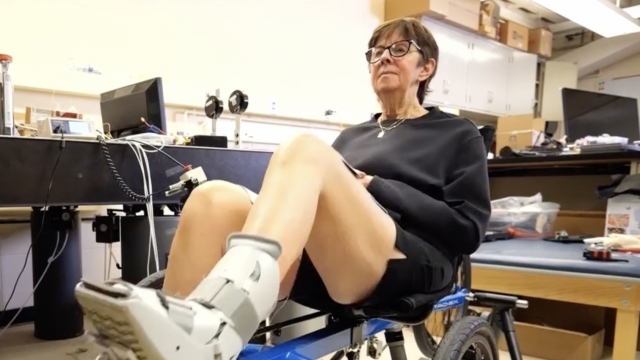More than half of stroke survivors aged 65 and over have problems moving their bodies, according to the CDC. Syracuse University is using robotics in a rehabilitation setting to give people their movement back.
Looking at Patty Jowett, you wouldn't think she'd suffered a stroke.
"I knew that my leg wasn't fully functional, and I knew my arm wasn't either in my hand. So I just, I actually sat there and prayed a lot about it to see myself through it," said Jowett.
Since that day in 2014, she's struck back, and now she's helping other stroke survivors like herself.
Jowett's part of Syracuse University's ongoing research that uses exoskeletons of wearable robotics to improve rehabilitation and therapy.
Dr. Victor Duenas leads the work.
"People are asking, I want to stand up and hug, you know, my little grandson or I want to be able to go to the kitchen without any help. So these devices actually achieve that," said Dr. Duenas.
First came a special cycle and robotic shoes, along with the patches on Jowett's legs. Those patches send little electrical jolts to her muscles. It helps with a common stroke symptom called "foot drop," in which a patient struggles to lift their feet.
"They've been helpful to me. They've made me see another person inside of me that I didn't know existed," said Jowett.
Then there's a powered ankle foot compression boot. It aids the joints so that a person can get back to the same pace and balance they had before their stroke. For Patty Jowett, it means more stamina for what lies ahead.
"It's about being a fuller person. To know you can get out there and do these things. It's exciting," she said.
She says she plans to take each day step by step.
SEE MORE: Acupuncture may enhance post-surgery outcomes in cardiac patients
Trending stories at Scrippsnews.com



